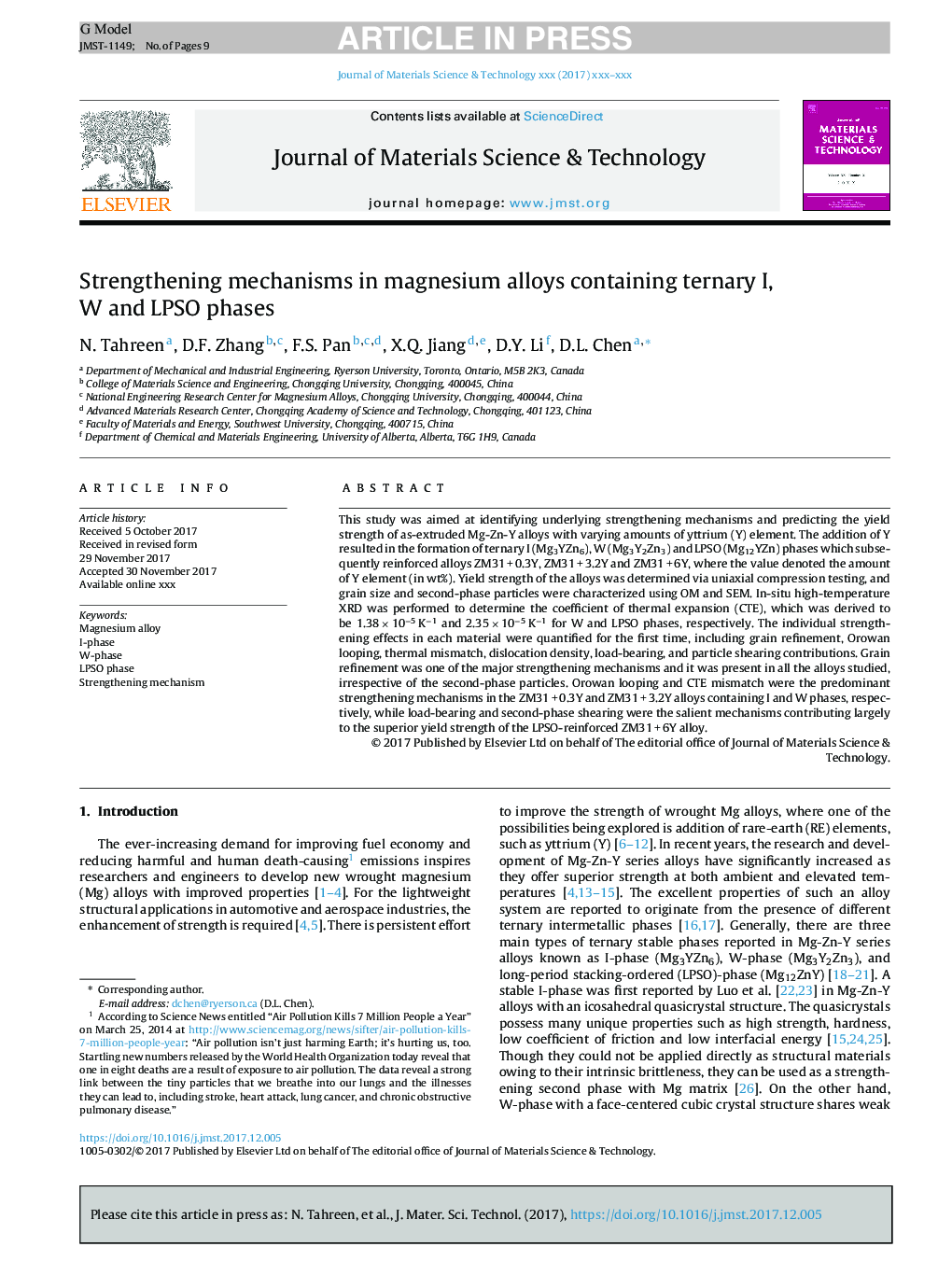| Article ID | Journal | Published Year | Pages | File Type |
|---|---|---|---|---|
| 7951946 | Journal of Materials Science & Technology | 2018 | 9 Pages |
Abstract
This study was aimed at identifying underlying strengthening mechanisms and predicting the yield strength of as-extruded Mg-Zn-Y alloys with varying amounts of yttrium (Y) element. The addition of Y resulted in the formation of ternary I (Mg3YZn6), W (Mg3Y2Zn3) and LPSO (Mg12YZn) phases which subsequently reinforced alloys ZM31Â +Â 0.3Y, ZM31Â +Â 3.2Y and ZM31Â +Â 6Y, where the value denoted the amount of Y element (in wt%). Yield strength of the alloys was determined via uniaxial compression testing, and grain size and second-phase particles were characterized using OM and SEM. In-situ high-temperature XRD was performed to determine the coefficient of thermal expansion (CTE), which was derived to be 1.38Â ÃÂ 10â5Â Kâ1 and 2.35Â ÃÂ 10â5Â Kâ1 for W and LPSO phases, respectively. The individual strengthening effects in each material were quantified for the first time, including grain refinement, Orowan looping, thermal mismatch, dislocation density, load-bearing, and particle shearing contributions. Grain refinement was one of the major strengthening mechanisms and it was present in all the alloys studied, irrespective of the second-phase particles. Orowan looping and CTE mismatch were the predominant strengthening mechanisms in the ZM31Â +Â 0.3Y and ZM31Â +Â 3.2Y alloys containing I and W phases, respectively, while load-bearing and second-phase shearing were the salient mechanisms contributing largely to the superior yield strength of the LPSO-reinforced ZM31Â +Â 6Y alloy.
Related Topics
Physical Sciences and Engineering
Materials Science
Materials Chemistry
Authors
N. Tahreen, D.F. Zhang, F.S. Pan, X.Q. Jiang, D.Y. Li, D.L. Chen,
